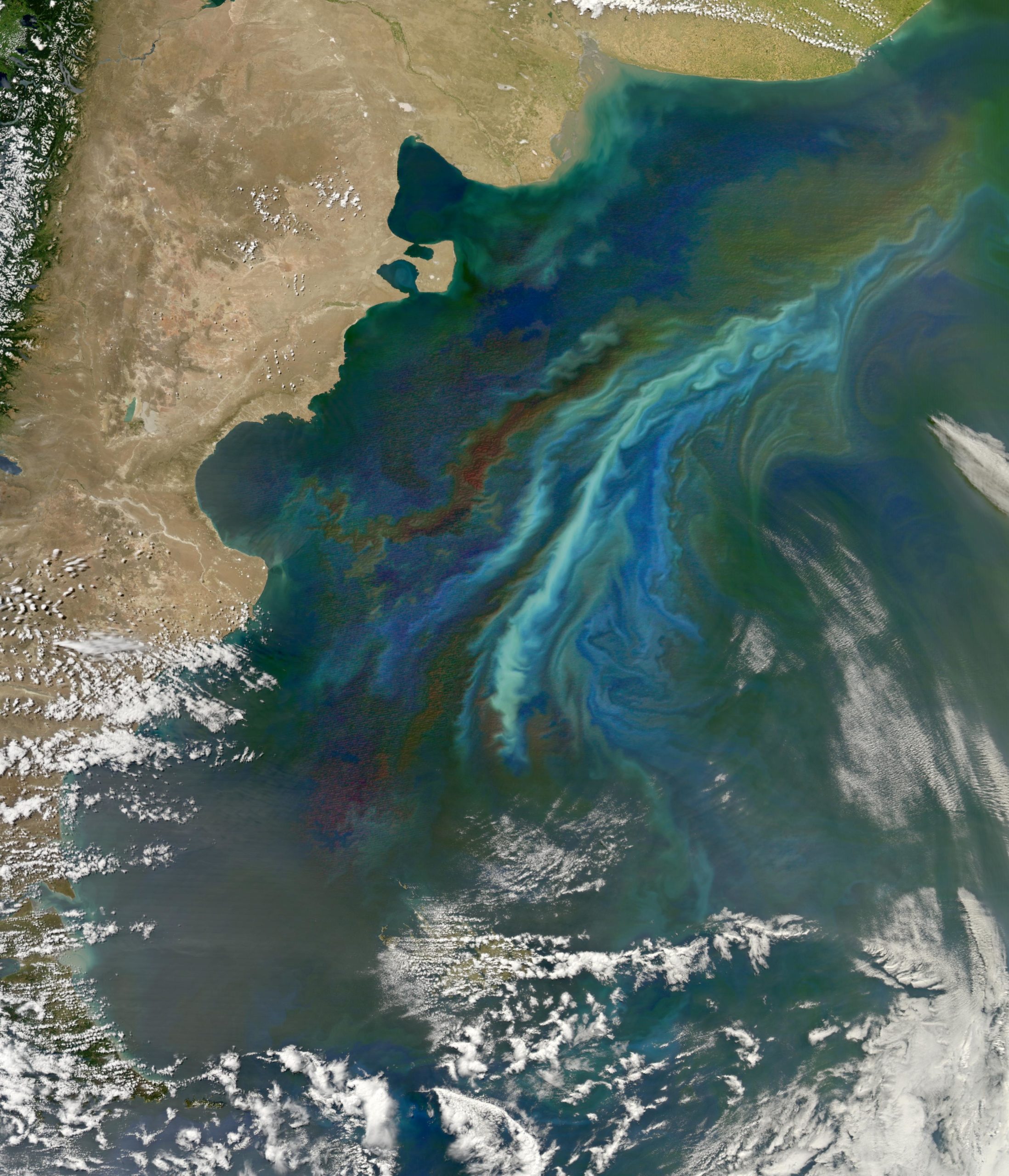Phytoplankton may be microscopic, but that doesn’t mean we can’t see them. Just look up: These little critters are brightening up cloudy days around the world.
That’s according to research published Friday in the open-access journal Science Advances, which highlights the surprisingly large role microbes in the Southern Ocean play in cloud formation. Tiny phytoplankton can be swept out of their watery homes by gusts of wind. And once airborne, they help encourage water condensation, forming brighter clouds that reflect additional sunlight.
“The clouds over the Southern Ocean reflect significantly more sunlight in the summertime than they would without these huge plankton blooms,” said study co-author Daniel McCoy of the University of Washington in a statement. “In the summer, we get about double the concentration of cloud droplets as we would if it were a biologically dead ocean.”
It’s a well-known fact that phytoplankton play a huge role in managing Earth’s climate by drawing down CO2 for photosynthesis every year. The new study suggests another fascinating way that these little critters are shaping our planet — by making it a tad brighter. Averaged over the year, the researchers find that phytoplankton reflect an extra 4 watts of incoming solar radiation per square meter in the Southern Ocean skies.
A Mystery In the Clouds
Clouds form when droplets of water condense out of the air around tiny particles — specks of salt, dust, dead organic matter, and even living micro-organisms. Turns out, particle size has a direct impact on cloud brightness: Smaller particles form smaller droplets, creating more surface area within the cloud to reflect back incoming sunlight, which in turn helps keep the Earth’s surface cooler.

The researchers stumbled upon cloud-forming microbes somewhat by accident, while they were looking at cloud cover data captured by NASA’s Earth-orbiting MODIS satellite over the Southern Ocean in 2014. The team discovered that Southern Ocean clouds were reflecting more sunlight in the summer, suggesting a greater abundance of small cloud-forming particles. This was a bit weird, because the Southern Ocean surface waters are actually much calmer in the summer and send up less salt spray into to the atmosphere.
The new study took a closer look at what else could be making the clouds more reflective. Using ocean biology models and data on cloud droplet concentrations, the team identified marine life as the likely culprit. Phytoplankton emit gases such as dimethyl sulfide (the stuff that gives the ocean its distinctly sulfurous smell), which, once airborne, can also help condense water droplets. What’s more, summertime plankton blooms form a bubbly scum of tiny organic particles that are easily whipped up into the air. Taken together, these two biological pathways double the number of tiny droplets in Southern Ocean skies during the summer.
The Southern Ocean, isolated from human pollution, offers us a glimpse into what skies around the world might have looked like in pre-industrial times. How much of an impact biological cloud seeding has on Earth’s global climate remains to be seen. But for now, my day is brightened simply by the knowledge that there are invisible critters up in the sky drawing silver linings around the clouds.
Read the full, open-access scientific paper here.
[UW News]
Top image via Paul Bica / Flickr
